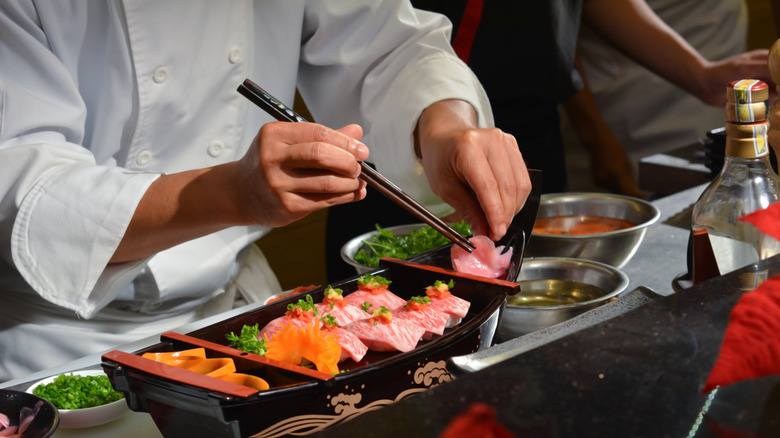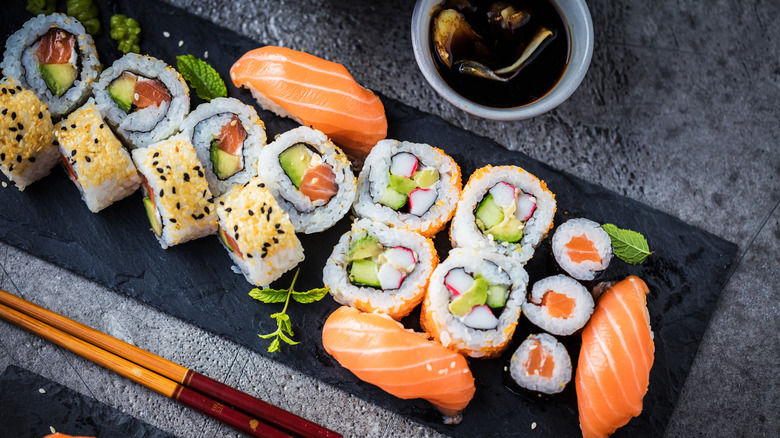How A Natural Disaster Solidified Sushi's Place In Restaurants
While it can now be found everywhere from high-end restaurants to American supermarkets adorned with plastic grass, sushi has gone through a variety of iterations throughout history. While the term "sushi" is often associated with raw fish, fish isn't necessarily a critical ingredient. As per Eat-Japan, "sushi" refers to the specific kind of fermented, vinegared rice used to make the dish. While now considered a Japanese specialty, sushi is derived from a method of preserving fish that first originated in China.
According to PBS, it wasn't until the 1820s that sushi began to be served with fresh fish. In 1824, a man named Hanaya Yohei began selling sushi in the Ryogoku district of Edo, becoming the first in the area to do so. He perfected a "fast food" method of preparing sushi, pressing rice into balls and adding strips of fish on top. This kind of sushi would come to be known as nigiri.
However, despite being sold on the streets, some types of sushi were still considered delicacies. According to An Excentric Culinary History, sashimi was served as part of a state dinner when U.S. President Ulysses S. Grant visited Japan in the 1870s. But it was a natural disaster decades later that made sushi a restaurant staple.
An earthquake brought sushi into restaurants
Until the 1920s, sushi was typically considered a street food. That changed when the Great Kanto Earthquake struck the seaside cities of Tokyo and Yokohama in 1923. Smithsonian Magazine reports that the earthquake, followed by a 40-foot tsunami, helped ignite fires that set Tokyo ablaze. The cumulation of disasters ended with an estimated death toll of 140,000.
However, the earthquake that destroyed the lives of thousands ended up being a boon for local sushi chefs. According to Thrillist, the disaster caused real estate prices to drop — meaning that sushi chefs could afford to move their businesses to indoor establishments. By the 1950s, sushi was largely served indoors, per PBS.
As per the Michelin Guide, importer Noritoshi Kanai and chef Shigeo Saito brought sushi to California with their restaurant, Kawafuku. While it wasn't the first sushi restaurant to open in the United States, it paved the way for many others. Soon after, Tokyo Kaikan, where the California roll was invented, opened its doors. By the 1980s, sushi had exploded in popularity worldwide. The rest — as they say — is delicious history.

